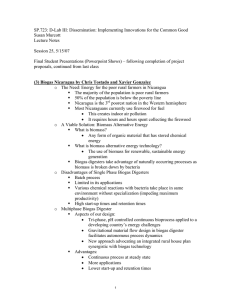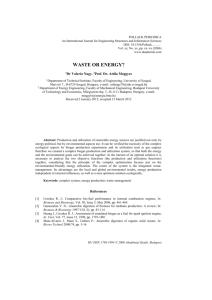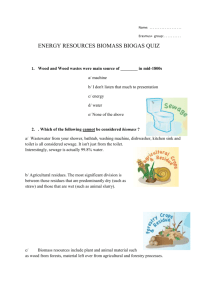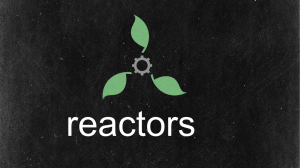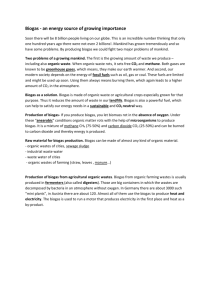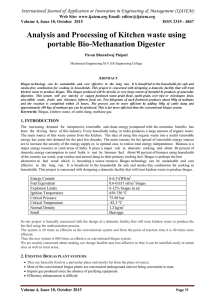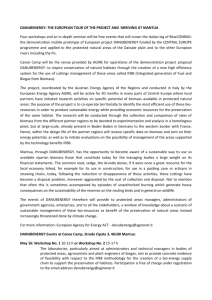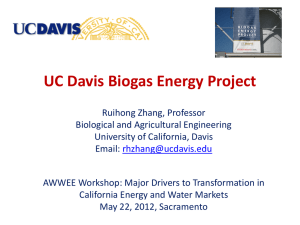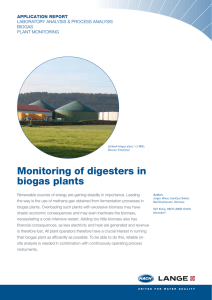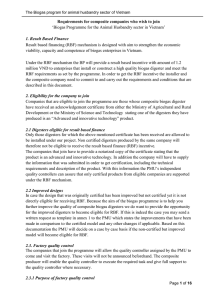Biofuel production
advertisement
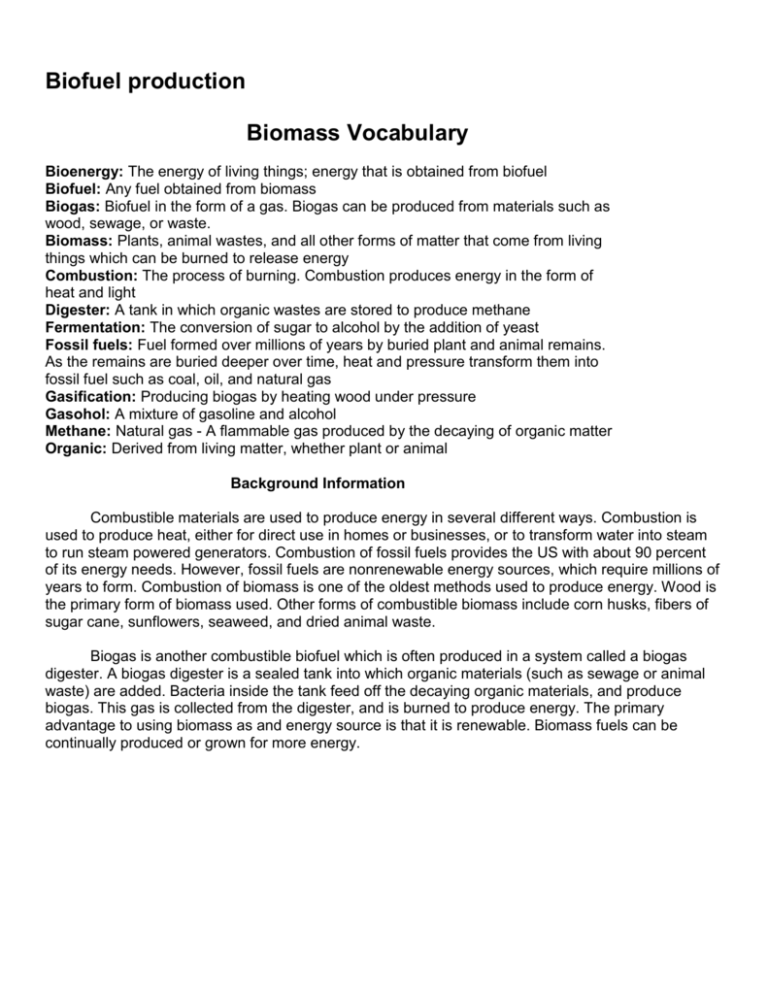
Biofuel production Biomass Vocabulary Bioenergy: The energy of living things; energy that is obtained from biofuel Biofuel: Any fuel obtained from biomass Biogas: Biofuel in the form of a gas. Biogas can be produced from materials such as wood, sewage, or waste. Biomass: Plants, animal wastes, and all other forms of matter that come from living things which can be burned to release energy Combustion: The process of burning. Combustion produces energy in the form of heat and light Digester: A tank in which organic wastes are stored to produce methane Fermentation: The conversion of sugar to alcohol by the addition of yeast Fossil fuels: Fuel formed over millions of years by buried plant and animal remains. As the remains are buried deeper over time, heat and pressure transform them into fossil fuel such as coal, oil, and natural gas Gasification: Producing biogas by heating wood under pressure Gasohol: A mixture of gasoline and alcohol Methane: Natural gas - A flammable gas produced by the decaying of organic matter Organic: Derived from living matter, whether plant or animal Background Information Combustible materials are used to produce energy in several different ways. Combustion is used to produce heat, either for direct use in homes or businesses, or to transform water into steam to run steam powered generators. Combustion of fossil fuels provides the US with about 90 percent of its energy needs. However, fossil fuels are nonrenewable energy sources, which require millions of years to form. Combustion of biomass is one of the oldest methods used to produce energy. Wood is the primary form of biomass used. Other forms of combustible biomass include corn husks, fibers of sugar cane, sunflowers, seaweed, and dried animal waste. Biogas is another combustible biofuel which is often produced in a system called a biogas digester. A biogas digester is a sealed tank into which organic materials (such as sewage or animal waste) are added. Bacteria inside the tank feed off the decaying organic materials, and produce biogas. This gas is collected from the digester, and is burned to produce energy. The primary advantage to using biomass as and energy source is that it is renewable. Biomass fuels can be continually produced or grown for more energy. Lesson - Model of a Biogas Digester Focus: Biomass and biofuels as renewable energy resources Objective: • Students will gain understanding of what biofuels are and how they are used to produce energy • Students will build a model of a biogas digester Teaching the lesson: A. Introduction • The teacher should review what renewable and non-renewable resources are, and then go over background information with students • The teacher will explain to students that they will construct models of biogas digesters, which will use sugar as the organic matter (it is produced by the sugar cane plant), yeast will serve in the place of bacteria to break down the organic matter, a plastic bottle will serve as the storage tank, and a balloon will serve as the biogas storage container. B. Materials * 2 tablespoons of dried yeast * 2 tablespoons of sugar * a balloon * a small plastic soda bottle * a plastic thermometer *some warm water C. Instructions • Pour the dried yeast and the sugar into the plastic bottle • Add the warm water • Measure the temperature of the water with the thermometer and record it • Cover the top of the bottle with its cap, and shake it as hard as you can • Remove the cap and place the empty balloon over the bottle's opening • Allow the system to sit undisturbed for around an hour • Make observations D. Evaluation A biogas digester is very much like the digester produced in this lesson. Organic materials are the source of food for anaerobic (non-oxygen requiring) microorganisms which give off a gas in the process. In a true biogas digester, waste materials are added to the digester, which contains bacteria, and a biogas called methane is produced. The gas, methane, is burned to release energy. In the model digester, sugar is added to the bottle, which contains yeast, and a gas called carbon dioxide is produced. This gas is not combustible, however. E. Closure • At what temperature was the greatest amount of gas produced, or at what temperature did the balloon fill the most? • Was the amount of gas produced the same for all temperatures? • Do you think that the yeast produce more gas at certain temperatures compared to others? Credit: The Elm Fork Education Center, the Texas State Energy Office Renewable Resources and Sustainability Program, and Jessica White
